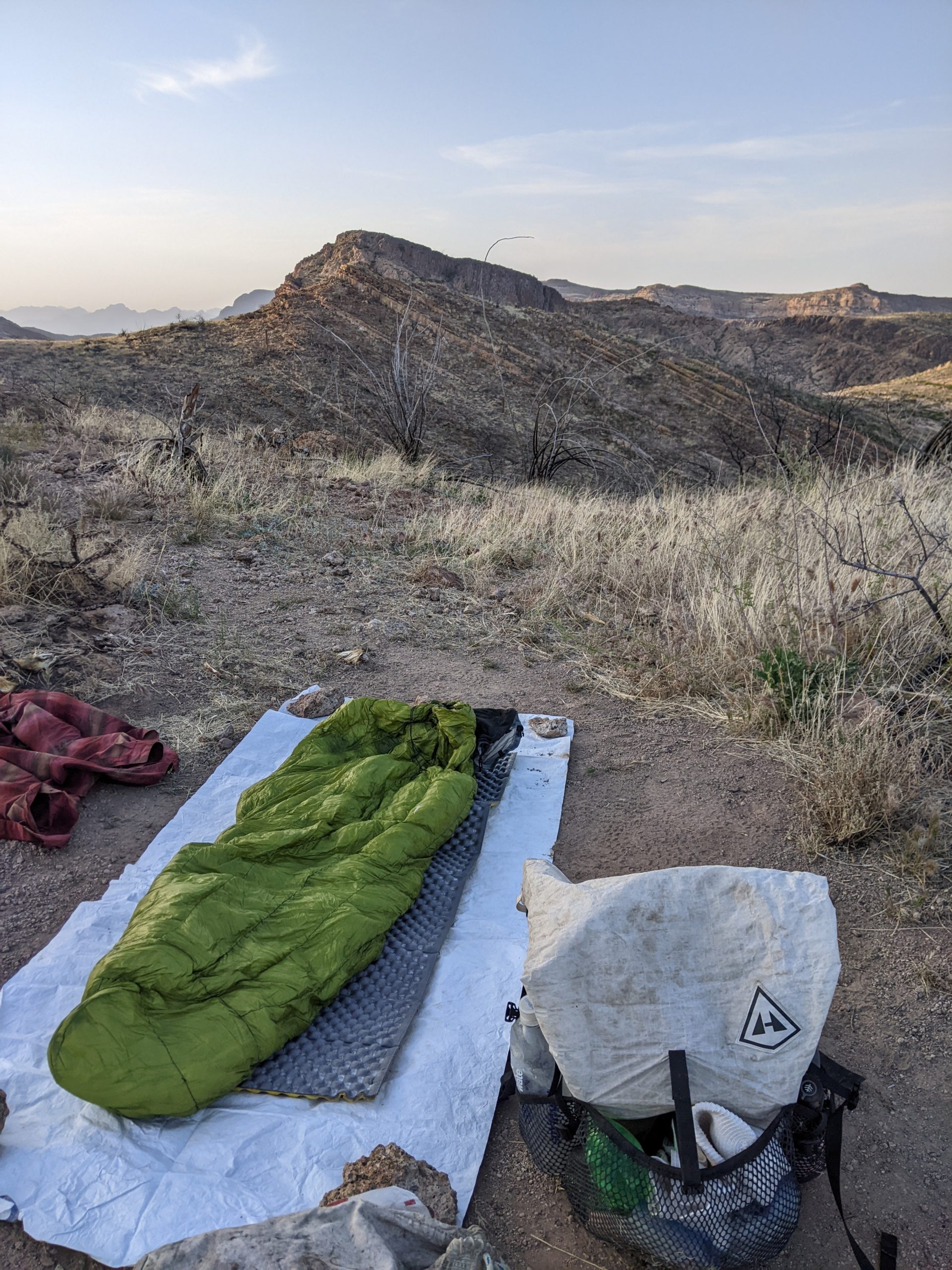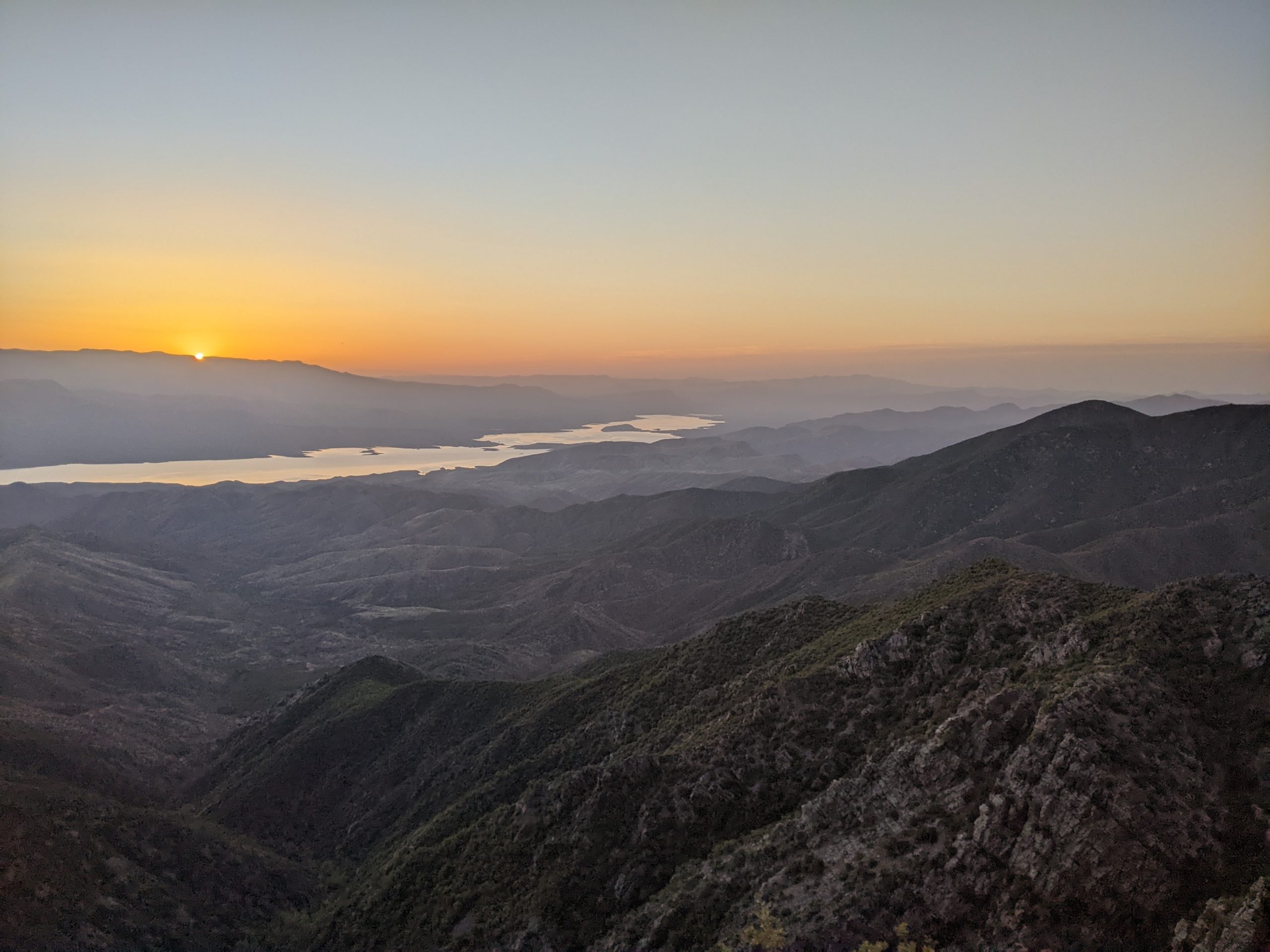The Ultimate Guide to Cowboy Camping
It’s that magical time of the year again: cowboy camping season. The desert is cooling off and hikers are heading out on the Arizona Trail or finishing off Continental Divide or Pacific Crest Trail SoBo hikes. One of the best parts of desert camping has to be leaving your tent at the bottom of your backpack and sleeping with nothing between you and the stars.
Yet many experienced thru-hikers are still wary of trying cowboy camping. What if it rains? What about bugs? Snakes? Here’s why you don’t have to worry, plus a few tips to sleep like a pro under the stars.
What is cowboy camping, and why should you try it?
Cowboy camping is simply sleeping without a shelter. You’ll still need a groundsheet (most thru-hikers use Tyvek), a sleeping pad, and a sleeping bag. You should also still bring a tent or tarp in case of unexpected weather.
Cowboy camping is camping in its simplest form. It’s easy to watch the sunset and sunrise directly from your sleeping bag. Chatting with your trail family is simpler if you’re not shouting through tents. Setting up and taking down a tent is one less chore if you’re as lazy as I am. But by far the biggest reason to cowboy camp is waking up in the middle of the night. Watching the stars without getting out of bed is one of my favorite things about a thru-hike.
Despite all of these reasons to try it, cowboy camping can be fickle. You have to choose the right location and be prepared for unexpected weather.
Where to cowboy camp?
Some ecosystems make cowboy camping a lot easier than others. In general, if you attempt to cowboy camp in the desert or a dry forest, you’ll have a much better time than if you give it a shot in a rainforest or near a swamp.
Typically, try cowboy camping in places that don’t see a lot of precipitation. This will save you from having to set up your tent in the middle of the night when a storm rolls in. Dry locations normally have fewer bugs, so you won’t have to worry about mosquitos annoying you all night. Any desert trail is perfect, but you can often also find good cowboy camping spots above treeline away from water or in high-altitude pine forests. If you’re unsure if you have a good location, you can always set up your tent nearby in case you have to make a midnight dash inside.
Time of year can also impact shelter choices. I live in Ontario, which is rainy and buggy during the summer. However, in spring and fall, it’s drier and all of the bugs die, making shoulder season perfect for cowboy camping.
READ NEXT – The Arizona Trail Gear List
Should you bring a tent?
The short answer is yes. You should always bring some sort of shelter, even if the weather forecast shows absolutely no rain and you plan on cowboy camping every night. The consequences of being in the middle of nowhere with no shelter in the rain are just too high to leave your tent at home. You should also make sure your tent is easy to grab in the middle of the night.
However, you can potentially get away with a more stripped-down, lightweight shelter. I normally bring a flat tarp if I plan on cowboy camping, which is just a quarter of the weight of my tent. It stays folded in the bottom of my pack, but it’s there if I really need it.
UL tarp recommendations: Mountain Laurel Designs Monk Tarp (4-8 oz) | SplitWing UL Tarp by Slingfin (8 oz) | Zpacks Hexamid Pocket Tarp w Doors (6.1 oz) | Hyperlite Mountain Gear Flat Tarp (9 oz)
Foam vs. Inflatable Pad for Cowboy Camping
A closed-cell foam sleeping pad is your safest bet for cowboy camping since it can’t get popped by rogue thorns or sharp stones. However, you can still use an inflatable as long as you inspect your campsite for sharp objects ahead of time and put down a sturdy groundsheet (again, Tyvek is a great choice). Make sure your groundsheet is generously cut with extra room all around your pad. It will be less likely to slip off that way, and you can keep your essentials on hand and out of the dirt.
For extra protection, you can also supplement your inflatable with an ultralight, 1/8″ foam pad such as the Gossamer Gear Thinlight.
READ NEXT – Therm-a-Rest Z Lite Sol vs. NEMO Switchback: The Ultimate Foam Pad Comparison
Predicting the Weather
The biggest concern when cowboy camping is an overnight storm. Sure, you can set up your tent in the dark at two a.m., but that’s no fun. Checking a weather forecast before you leave town can help. If you carry a device like the Garmin inReach with a generous subscription plan, you can also get a limited local forecast via satellite.
However, if you’re out for several days between town stops and you’re not a Garmin user, you may have to make a judgment call without the help of the internet. Learning a little about local weather patterns is useful. Generally, I only cowboy camp on clear nights outside of the monsoon season. Monsoon thunderstorms can move in overnight without much warning.
If there are any dark clouds at all, I set up my tent. Sparse, small clouds worry me less, so I will still cowboy.
If you want to cowboy camp on cloudy nights with more confidence, learn a little about cloud types and what they mean. A little basic meteorology is incredibly useful for thru-hikers regardless of shelter choice as it can help you predict the weather. There are plenty of online resources if you’re ready to learn more.
What about wind?
Windy nights are perfect for cowboy camping. Wind keeps both bugs and condensation away. Cowboy campers are generally low profile, so it’s easier to find cover from wind. You also don’t have to worry about flapping tent fabric keeping you awake all night. I will often seek out windier spots just to help with bug control.
How to Pick the Perfect Camp Spot
Campsite choice is always important, but even more so if you’re cowboying. Stay away from water to avoid bugs. You may want to choose a more exposed spot to catch a breeze. Cowboy camping is strictly a fair-weather activity, so even if you have a little exposure, you’ll have to worry less about storms.
If you need a refresher on choosing a great camp spot, check out our article on this subject.
What about condensation?
Proper campsite choice can help avoid condensation. Camp away from water, and if possible, under a tree, and you will reduce the amount of dew on your sleeping bag in the morning.
Unfortunately, sometimes condensation is just unavoidable. On the plus side, anywhere you might consider cowboy camping is normally warm and dry during the day. If you wake up to a slightly soggy sleeping bag, it’s easy to pack it away a little damp and then get it out to dry during your lunch break. Simply put it in a sun patch and rotate every 5-10 minutes, and it will be dry in no time.
What about privacy?
I love cowboy camping on solo hikes where privacy is less of a concern. If you’re part of a large group, it’s still easy enough to find enough coverage to change clothes or whatever else you need to do. Simply look for nearby bushes, boulders, or even outhouses. You’ll want to choose a campsite with a private place for peeing anyway: just make sure it will also cover you while you change.
What about Bears/Mountain Lions/Scary People?
Sleeping in a tent can be a bit of a psychological trick. Thin fabric walls won’t discourage problem animals at all, although you may feel safer inside your shelter. The best thing to do to keep animals away is to keep a clean camp and be responsible with your food. Remember, bears and mountain lions want nothing to do with people and normally will completely avoid your camp. If you have difficulty sleeping while camping due to worries about animals and a tent helps you fall asleep, you might want to skip cowboy camping. Cowboy camping is completely safe, but being able to sleep beats seeing the stars.
Any time I camp close to a road or stealth camp anywhere I’m worried about people, I prefer to cowboy camp. I’m basically invisible since I’m so close to the ground, and my cowboy camping setup draws far less attention than my bright orange tent with reflective strips. Once it’s dark, no one is going to see me at all. This does rely on me being off trail and away from established campgrounds. If I’m solo in a campground, I’ll set up my tent so it’s a little less obvious that I’m alone.
What about insects and snakes?
Like bears and mountain lions, insects and snakes really don’t want anything to do with people. Be aware of your surroundings (don’t set up directly on an anthill, for example) when you pick your camp spot, and everything will leave you alone. I’ve cowboy camped for hundreds of nights at this point. The only critter that has ever tried to cuddle with me was one very friendly frog on the Arizona Trail.
The exception to this is mosquitos. Avoiding water and wet areas can help, but if you’re in an area with a lot of mozzies, it’s probably best to just suck it up and set your tent up. Some hikers use a ball cap and mosquito head net combo to avoid being bitten while cowboy camping, and this may work for you, but I find the annoying buzzing keeps me awake all night.
Cowboy camping is absolutely amazing. Anyone hiking a desert trail should try it at least once. I hope these tips help you get outside and sleep under the stars.
Featured image: Photo by Sofia Gellner. Graphic design by Chris Helm (@chris.helm).
This website contains affiliate links, which means The Trek may receive a percentage of any product or service you purchase using the links in the articles or advertisements. The buyer pays the same price as they would otherwise, and your purchase helps to support The Trek's ongoing goal to serve you quality backpacking advice and information. Thanks for your support!
To learn more, please visit the About This Site page.









Comments 10
The queen of cowboy camping is hands down Daisy aka Smiles. She did the triple crown, Florida Trail and many others and has no fear. She cowboy camps anywhere anytime.
What about predicting if there will be dew?
Or do you just depend on the forecast and the dew point?
Great article. That’s how we do it in Northern Arizona as well… For bugs, we use smoke pots: small tin cans will smoldering bark or sage. For snakes & rodents, a solar powered ground stakes that emit sporadic ultra sonic pulses… they work great on our ranch, and they’re light enough to pack.
for people not on trails or doing it because of a hike, we call it vagabonding. oftentimes coupled with being jobless, but not necessarily homeless. and sometimes being right out in the open is safer (though i prefer being tucked away).
Good article. I guess I’m spoiled. I live in rural NC and I just go out in the yard and throw down a pad with my sleeping bag. On Monday night, I camped with a summer air pad, CCF pad and sleeping bag. It got down to 28, and I had no issues with condensation or staying warm (I was surprised at that). I do have a 5-degree bag that’s probably comfort rated to 20 degrees.